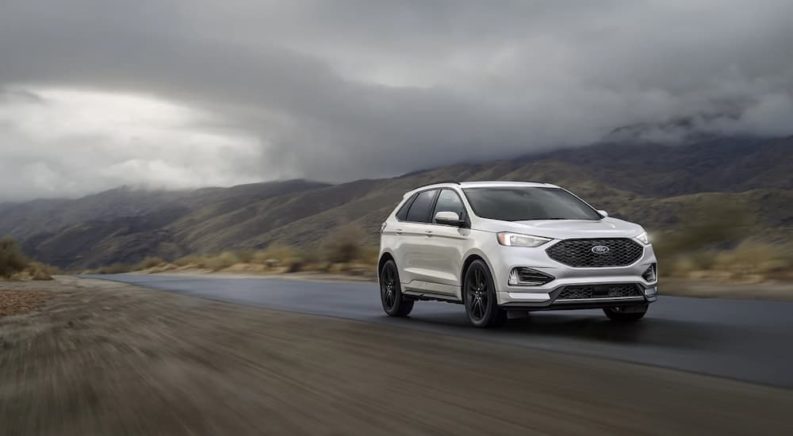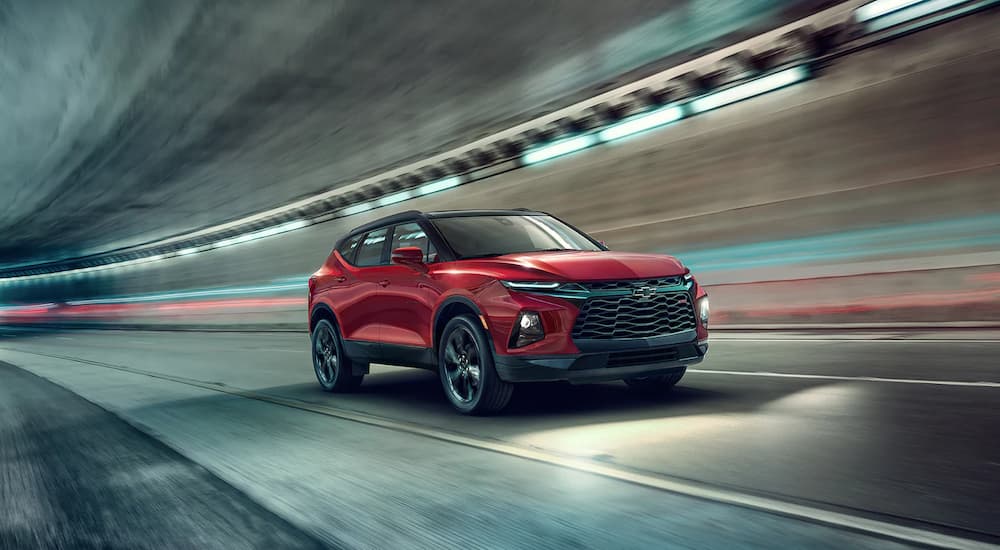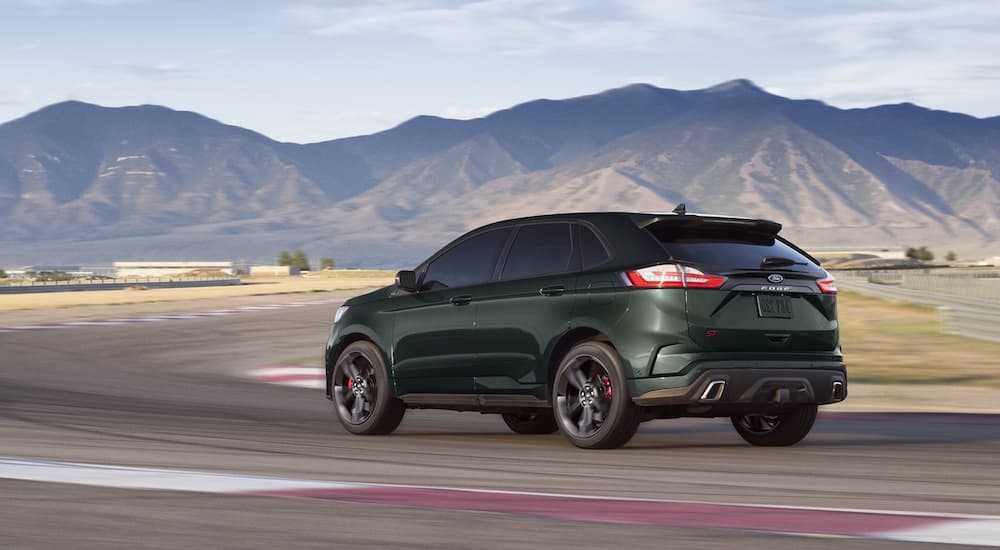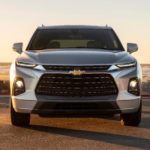The battle between Ford and Chevrolet has been raging for decades. Both companies were important to the development of American engineering, and the competition between the two brands has been consistent since the first automobiles took the highways and byways in a contest to establish supremacy. This is still true in 2022, and the battle between the 2022 Ford Edge vs 2022 Chevy Blazer is heating up. As we’ll see, Ford once again reaffirms its place as America’s leading car manufacturer.
Performance Showdown
Upon looking at the basic specifications from each model, they both appear to be evenly matched in terms of performance and what they’re packing underneath the hood. Both introductory models come standard with a 2.0L 4-cylinder engine that’s geared towards fuel efficiency and still maintaining enough power to push an SUV, and both 4-cylinder offerings are strikingly like one another. They’re both turbocharged and use dual-overhead-cam technology to provide the necessary boost.
One of the key differences between the two is how Ford’s available 2.7L V6 outperforms Chevrolet’s offering of a 3.6L V6. Introduced in 2015, Ford’s turbocharged workhorse provides an astounding 335 HP and produces 380 lb-ft of torque. Chevrolet’s answer to Ford’s challenge ultimately comes up short. While you can find the 3.6L V6 in a variety of GM models, from the Cadillac CT6 to the Buick Regal, it doesn’t quite match up to Ford, as it maxes out at 308 HP and only generates 270 lb-ft of torque. While both engines are known for their versatility and went into production at roughly the same time, Ford’s offering outperforms Chevy by a considerable amount.
Ford ups the ante with the Edge’s performance by equipping all trims with standard AWD, as opposed to Chevrolet only offering it as an available upgrade. Making it more accessible, Ford has the consumers’ best interest in mind as it realized that towing and exploring go together with having a stronger drive train. Aside from making AWD accessible, Ford also offers two types of Automatic transmission with the Edge, as opposed to Chevrolet only having a single transmission across the board for all trims. Ford’s 8-speed transmission also comes equipped with select shift, a way of manually shifting that affords the driver more control over their vehicle in an automatic than ever before.
A Question of Comfort
In the past, SUVs and comfort were a contradiction in terms. While they were never uncomfortable by any means, many of their selling points opted to focus on factors such as engine size and towing power. Oh, how the times have changed! Today, the SUV is geared more towards the average family and has even replaced both the station wagon and the minivan in that regard. Because SUVs are now geared towards such categories as sportiness, fuel efficiency, and providing a commute that’s as comfortable as it is safe, the rules of the game have changed considerably. Both the Edge and Blazer deliver this category, but only one can come out on top.
The interior of the Blazer has been given somewhat of a makeover for 2022. Unlike the typical interior that caters to a family dynamic, the Blazer shares more in common with the Camaro or Corvette in terms of creating a pseudo-racing aesthetic. While Chevy offers up several upgradable amenities such as a Bose 8 speaker system and an Enhanced Convenience Package to provide a somewhat pampered commute, these aren’t available in all trims; only a select few models can have a posh leather interior.
Ford clearly has Chevrolet outperformed when it comes to the interior as well. Aside from offering a considerable amount of more cargo space and legroom, the Edge has an interior that feels more inviting and could easily provide a comfortable ride for those long commutes. A 12″ infotainment screen in the center console makes the Edge’s built-in navigation system and other features more accessible and easier to use than most. Ford has also put more attention on driver assistance technology than Chevrolet, and while the Blazer does offer its fair share of creature comforts and amenities, only a few trims equip them as part of a standard package.
Seeking Safety
Naturally, being safe on the road is a priority for any car manufacturer to extend to their customer base. Ford and Chevrolet have both been industry renowned for decades for their attention to detail in keeping their drivers safe on the road. Both the Blazer and the Edge have a formidable number of features to ensure your safety on the road and warranties to cover you, your passengers, and your vehicle should life decide to make one of its unpredictable detours.
Ever since their introduction in the early 1990s, airbags have been standard on just about every make and model on the road. Chevrolet equips the Blazer with seven, all of which are strategically placed in different locales to be beneficial in the event of an accident. Ford follows suit with the Edge and yet takes into consideration the passengers’ lower extremities. In addition to the dual-stage airbags in the front of the vehicle, there are also bags positioned at a lower level to protect both the driver’s and passengers’ knees.
Two of Chevrolet’s most unique innovations when it comes to maintaining driver safety are StabiliTrak, which allows more control over the vehicle in the case of uncompromising road conditions, and Teen Driver. That second feature is a program that’s self-explanatory but important in helping younger drivers learn the importance of safe driving and allowing you to keep an eye on the habits they’re practicing when on the road. However, Ford is no slouch when it comes to safety and has equipped the Edge with several standard features to ensure you arrive at your destination on time and as safely as possible.
Because Ford understands that collisions don’t stop at airbags, the Edge is outfitted with the Personal Safety System. Going beyond the airbag, so to speak, this restraint system was developed by Ford to prevent airbag injuries in a collision. It’s one more step that Ford takes to ensure your safety. Also standard is the SOS post-crash alert system. The gap between an accident occurring and emergency services being properly notified can sometimes seem larger than it really is. Ford understands that time is of the essence, and every single moment matters. The post-crash alert system will honk the horn and flash your vehicle’s lights until the battery drains. While on-board services will alert the proper help, this will ensure you’re found in a timely manner.
A Warranty War
Ford and Chevrolet both offer exceptional quality in not just their vehicles but the warranties that cover them as well. These brands guarantee you bumper-to-bumper coverage for the first 3 years or 36,000 miles and powertrain coverage for a period of 5 years or 60,000 miles. This longer warranty extends to all parts responsible for your car being propelled forward. While both the engine and transmission are obviously protected, Ford also extends this warranty to cover the rest of your drivetrain, including axles, differentials, and transfer cases.
Ford surpasses Chevy when it comes to its comprehensive corrosion coverage. While Chevrolet covers this for a 3-year or 36,000-mile period, Ford will go cover their drivers for 5 years and unlimited miles. While Chevrolet covers safety restraints, this is only done so when you buy into their Chevrolet Protection Plan. Ford covers these for the same amount of time as their powertrain warranty (5 years or 60,000 miles). Ford also goes a step beyond with coverage on both tires and emissions. For the first 12,000 miles, Ford will cover the entirety of your vehicle’s tires.
Which is Better?
While the Ford Edge and Chevy Blazer may be competing in the same segment, it is clear that Ford has devoted more effort to providing a class-leading vehicle. From its highly capable engine options to its commitment to safety, Ford has given the Edge an edge over the competition. While both manufacturers offer solid options for customers who purchase their vehicles, it’s more than apparent that Ford has gone the extra mile in designing the 2022 Ford Edge.






